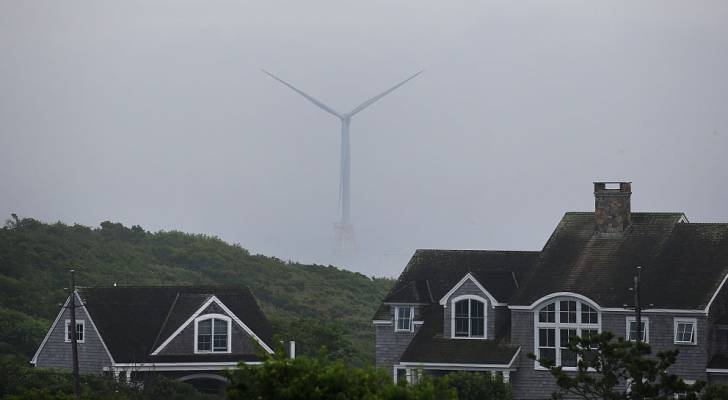
President Donald Trump is not a fan of wind energy, in part because he believes it’s having an adverse effect on the whales.
“You know, in one area, they lost two whales, like, in 20 years washed ashore,” the president told reporters at the White House recently, “This year they had 17 wash ashore. So, there’s something [that] happened out there. There’s something driving the whales a little bit loco.”
While many scientists dispute this claim, the fact is that the president is taking action to slow or even stop the development of this energy source.
Specifically, he has temporarily halted the new leasing of federal waters for offshore wind projects. He has also directed federal agencies to pause permits and approvals of on- and off-shore wind development, including the already approved Lava Ridge Wind Project in Idaho.
Unfortunately, this will impact American jobs, as the offshore wind sector was expected to employ 56,000 more people by 2030, according to a report by American Clean Power. It could also affect both the reliability and cost of electricity.
Research has shown that producing wind power can be a very cost-effective way of providing power. Texans, for example, are saving as much as $20 million per day thanks to wind and solar energy, according to the Rocky Mountain Institute.
With the development of wind power paused, the result could be higher energy bills. Consumers should start preparing for this possibility by taking a few key steps to help keep their utility costs down. Here are three options.
Invest in energy-efficient home upgrades
There are many upgrades you can make to your home that can help reduce the amount of electricity you use and, in turn, help keep your costs down.
One of the best options is upgrading to energy-efficient appliances. According to Energy Star, if you choose certified appliances, you can save around $8,750 on utility bills over the life of the product, reducing the cost of running the appliance by around 30%.
While the U.S. Department of Energy suggests that you can save around 10% on your utility bill by adjusting your thermostat back 7 to 10 degrees for 8 hours each day. Programmable thermostats can make this process automatic, which makes saving money even easier.
Other upgrades could include energy-efficient windows, adding more insulation to your home and using power strips to shut off the electricity to electronics and appliances, avoiding phantom power loss when you aren’t using them. All of these steps can help you spend less on powering your home — even if you have no choice but to rely on fossil fuel energy.
Consider renewable energy at home
Installing solar panels at home can be a great investment. Energy.gov reports that the payback time for most homeowners is less than 10 years.
There are both state and federal incentives for installing solar power in many parts of the country, and you may be able to finance your system through a personal loan. You could also enter into a power purchase agreement, which means you wouldn’t own the panels but would benefit from the clean power produced and still enjoy lower utility bills.
The Database of State Incentives for Renewables & Efficiency can help you find programs in your area, and the Residential Clean Energy Credit, in effect through 2032, provides a tax credit equal to 30% of the cost of installation, which can be a big savings.
Shop around for your energy supplier
In many parts of the country, you can also shop around for an electricity provider. Around 45 million consumers benefit from retail energy choice, and you can find out if you are one of them by visiting the website of your state’s utility commission.
If you live in a deregulated market and have the choice of who provides your electricity, you should compare options to see which company will charge you the least for the power you use. Many companies lock in your rate only for a limited period, so you may have to do this a few times a year — but you can realize potentially significant savings.
Taking these steps could help you avoid increased electricity costs that you may be faced with if a shift towards alternative energy is held up at the federal level. Regardless, it can be worth finding ways to cut your utility bills, especially if you can invest a little bit up front and enjoy reduced costs for years to come.
This article provides information only and should not be construed as advice. It is provided without warranty of any kind.